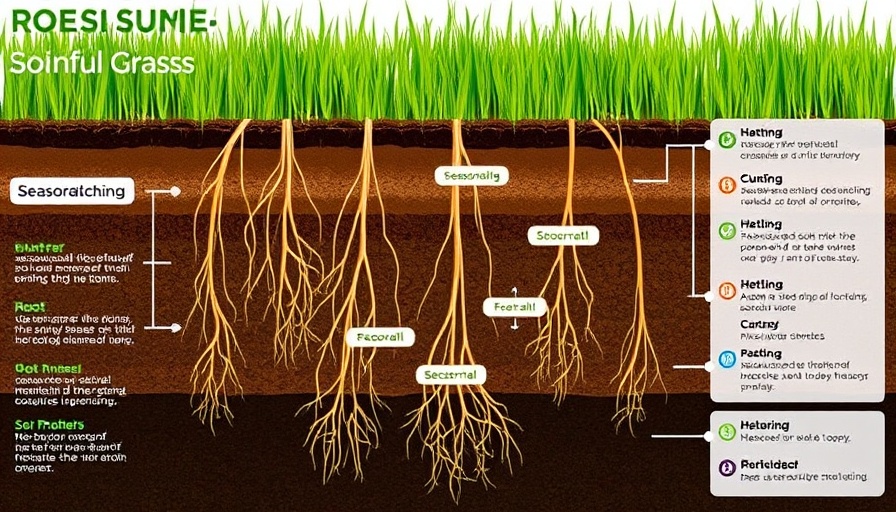
Unlocking the Green: What Small Yards Mean for Urban Living
Hoboken: A Quick Escape from Lawn Maintenance
In Hoboken, New Jersey, love is measured in square feet, with an average yard size of a mere 0.0108 acres. While this may evoke thoughts of cramped quarters, it also offers residents the chance to prioritize leisure over lawn care. The Hudson River Waterfront Walkway provides a picturesque setting for strolls while leisure options like picnicking at Pier A Park and kayaking at Sinatra Park are just minutes away. The compact landscape encourages a communal atmosphere, showcasing the beauty of efficiently utilizing limited space.
Union City’s Hidden Gems: Parks, Not Yards
Union City, New Jersey, boasts an almost equally diminutive yard size of 0.0152 acres. Here, the notion that less is more resonates strongly. What residents lack in yard space, they make up for in abundant park options. Washington Park, with its playgrounds and picnic areas, encourages social interactions and community gatherings. Ellsworth Park, with its shady trees and benches, stands as a reminder that nature can flourish even in the heart of a bustling urban area.
San Francisco: Urban Jungles and Scenic Views
With an average yard size of 0.0178 acres, San Francisco manages to intertwine city living with nature. The Golden Gate Park serves as an urban oasis for its residents, providing trails and a serene environment amidst the city’s hustle and bustle. Moreover, landmarks such as the Japanese Tea Garden and Land’s End offer romantic interludes where couples can enjoy nature’s beauty without the stress of yard upkeep. This speaks to a broader trend in urban planning, where public spaces are increasingly valued over private yards, fostering a connection to the outdoors.
New Jersey's Waterfront Wonders: Camden and West New York
Grab a slice of urban life in Camden and West New York, both tying for fourth place in the rankings with average yard sizes of 0.0184 acres. Camden offers Wiggins Waterfront Park, featuring views of the Philadelphia skyline that make it a picturesque backdrop for gatherings. Meanwhile, West New York’s Boulevard East beckons with its magnificent vistas, inviting residents out of their small yards and into the vibrant community atmosphere. Parks in these cities exemplify how proximity to nature can enhance overall well-being — a vital component in today's fast-paced life.
The Shift Towards Less Yard, More Life
The allure of smaller yards is gaining traction across cities like New York and San Francisco. As urban populations skyrocket, the idea of maintaining large yards becomes impractical for many. Instead, cities are reimagining outdoor spaces as communal hubs for relaxation and socialization, allowing residents to enjoy the great outdoors without the burden of lawn maintenance. This trend towards smaller personal yards, paired with more public green spaces, is radically changing perceptions of urban living. Less space means more opportunities for leisure, social outreach, and community-building events.
Future Predictions: Embracing the Green Revolution
As urbanization continues to shape our living spaces, future cities may prioritize large public parks over individual yard spaces. This shift could result in cities resembling vibrant jungles packed with community gardens, park amenities, and social focal points designed for enjoyment rather than upkeep. Predictions suggest that innovations in landscaping and urban design will work in tandem to create visually stunning yet functional urban spaces. The embrace of smaller yards could redefine homeownership, favoring a lifestyle rooted in acceptance of shared spaces.
Making an Impact: What Small Yards Teach Us
As we reflect on the significance of the 2025 Lawn-Liest Cities rankings, it’s clear that smaller yards can positively impact urban life. They encourage residents to rethink their relationship with space, prioritizing social connection and access to nature. The findings underscore the advantage of investing in urban greenspaces that cultivate community spirit while recognizing that the size of a yard does not dictate its potential for joy and connection.
 Add Row
Add Row  Add
Add 


 Add Row
Add Row  Add
Add 

Write A Comment